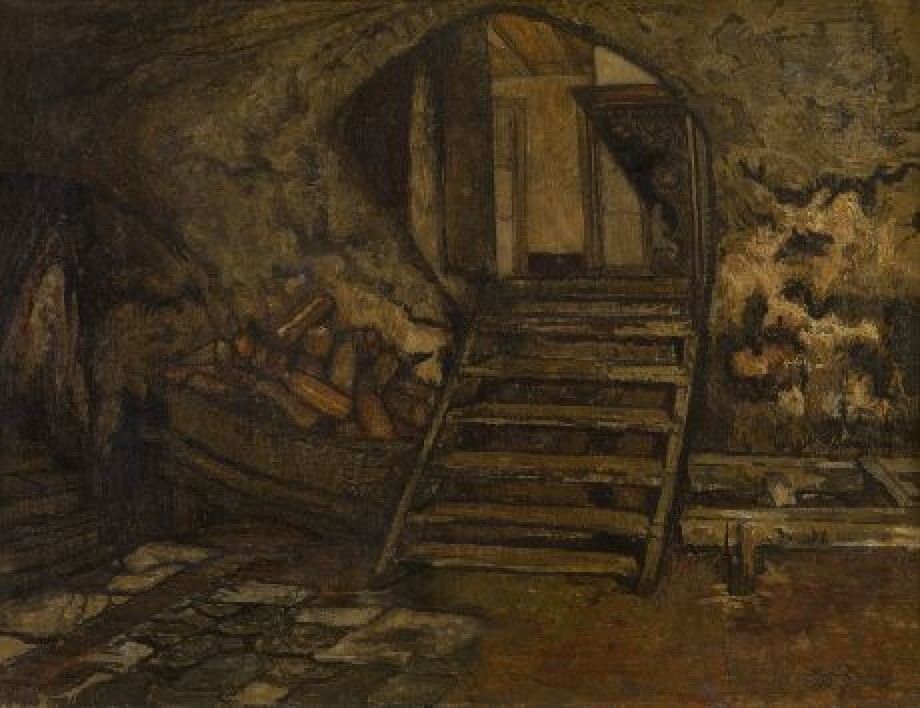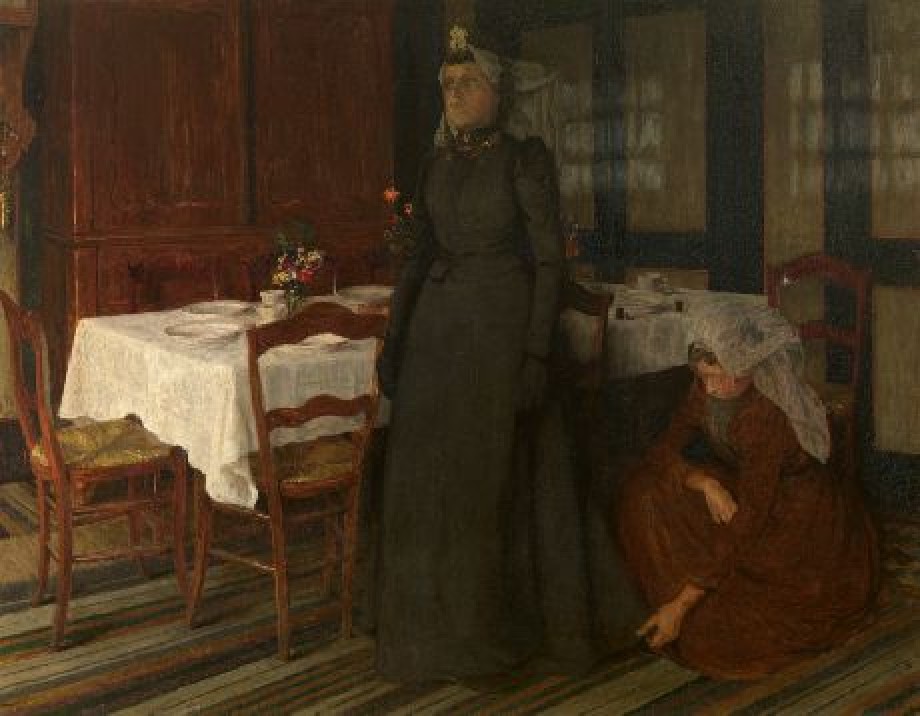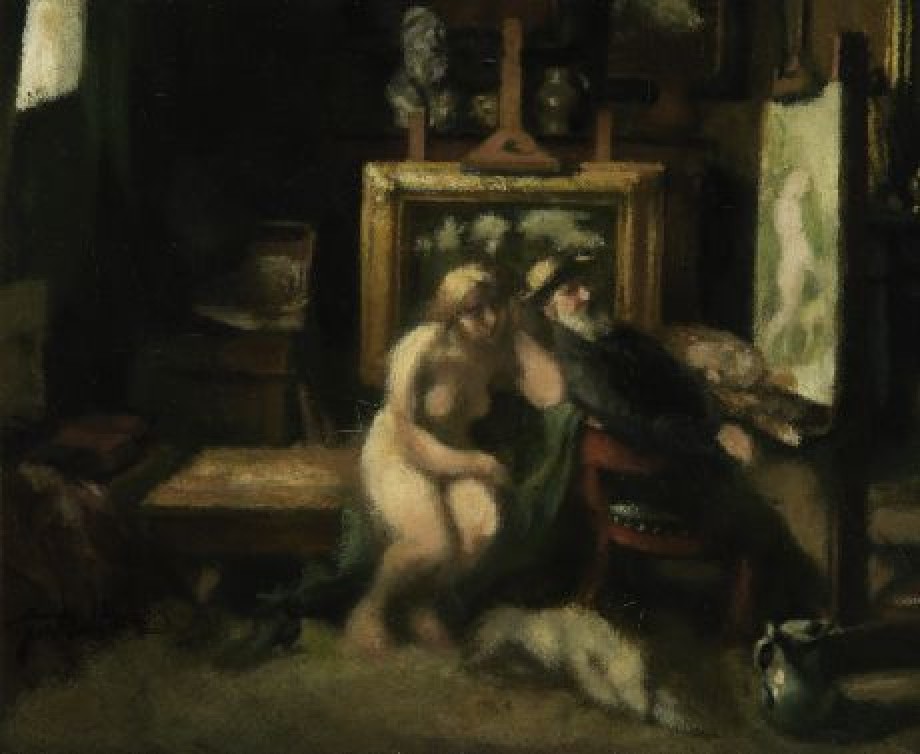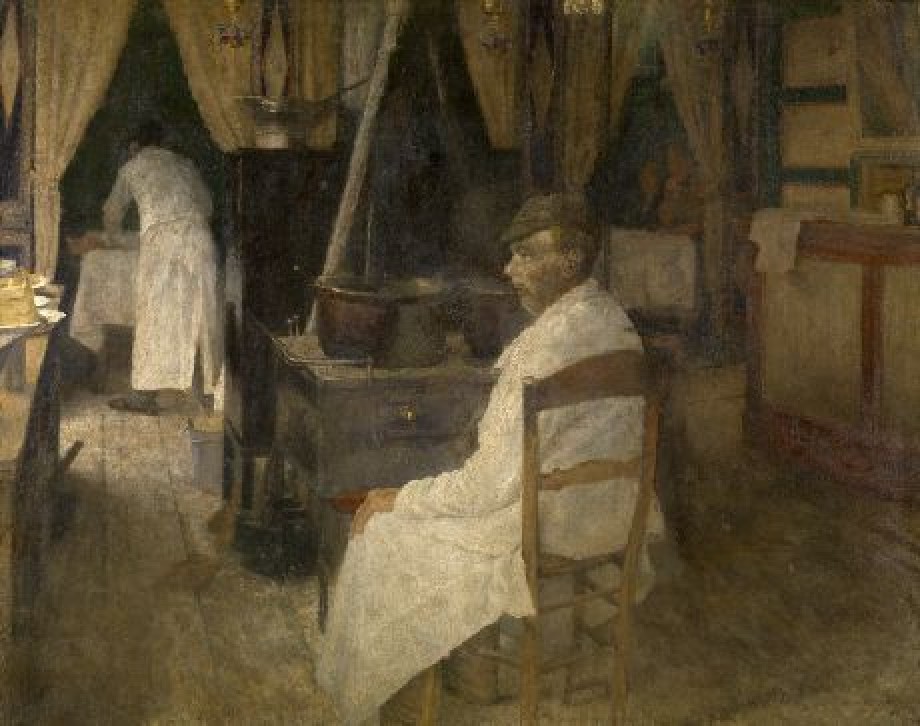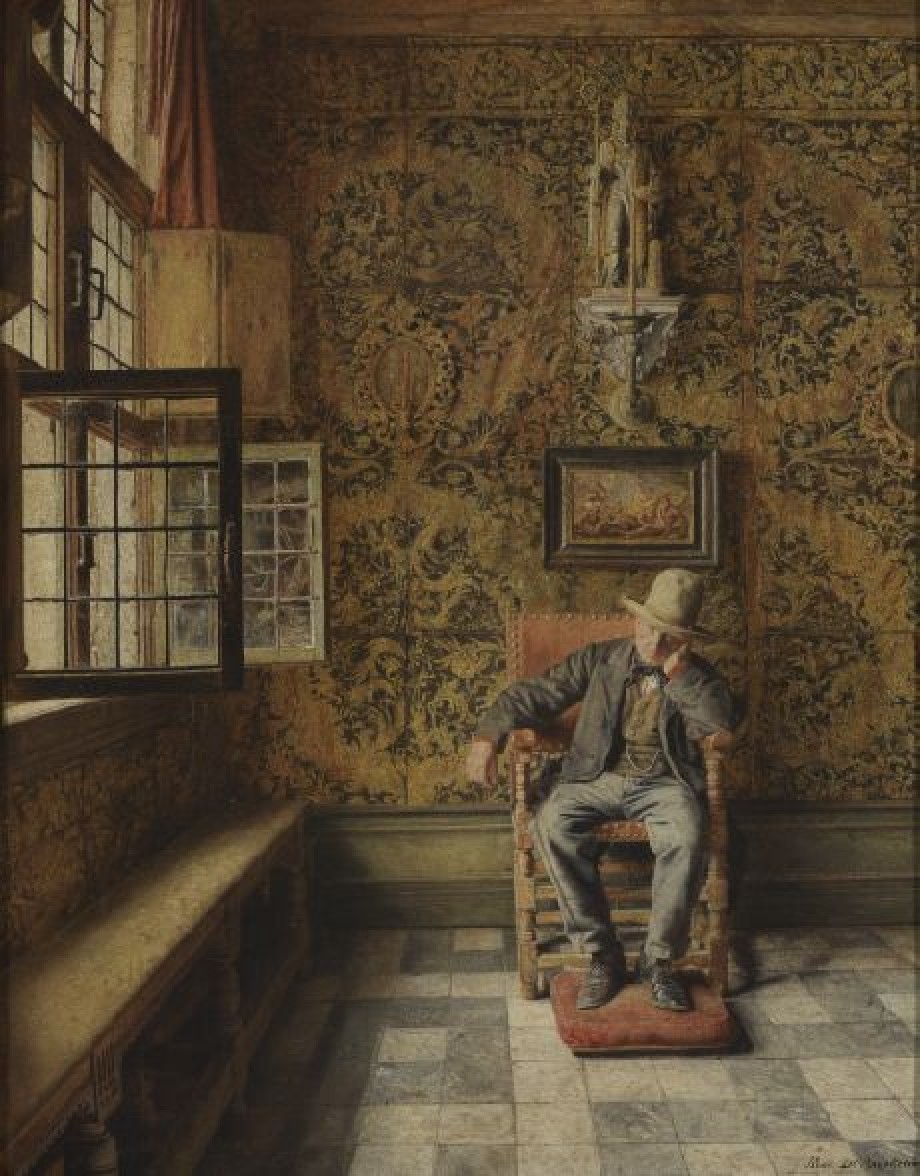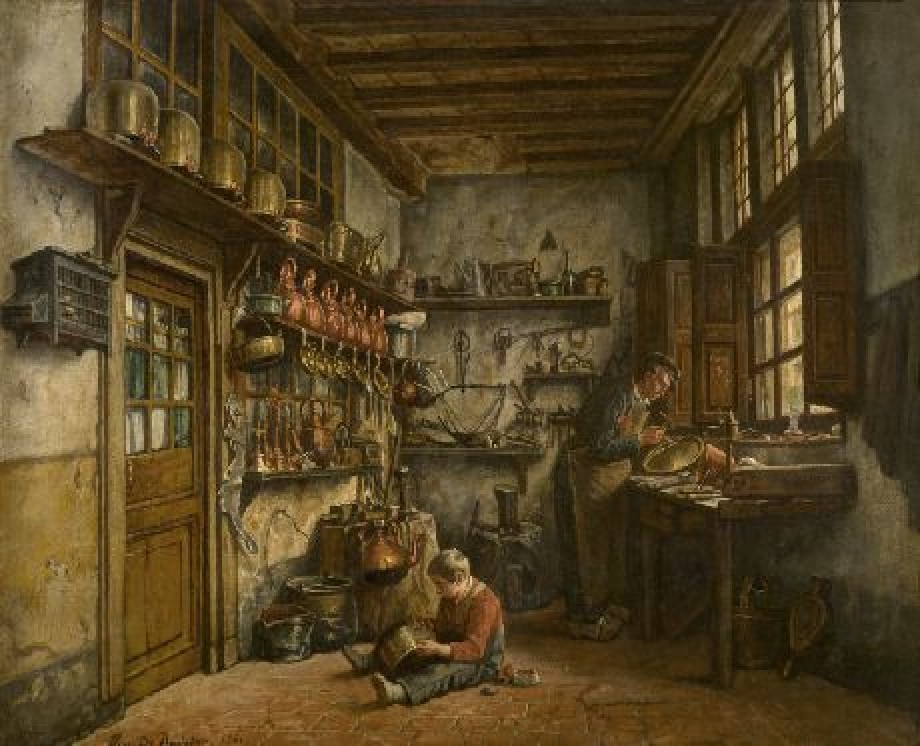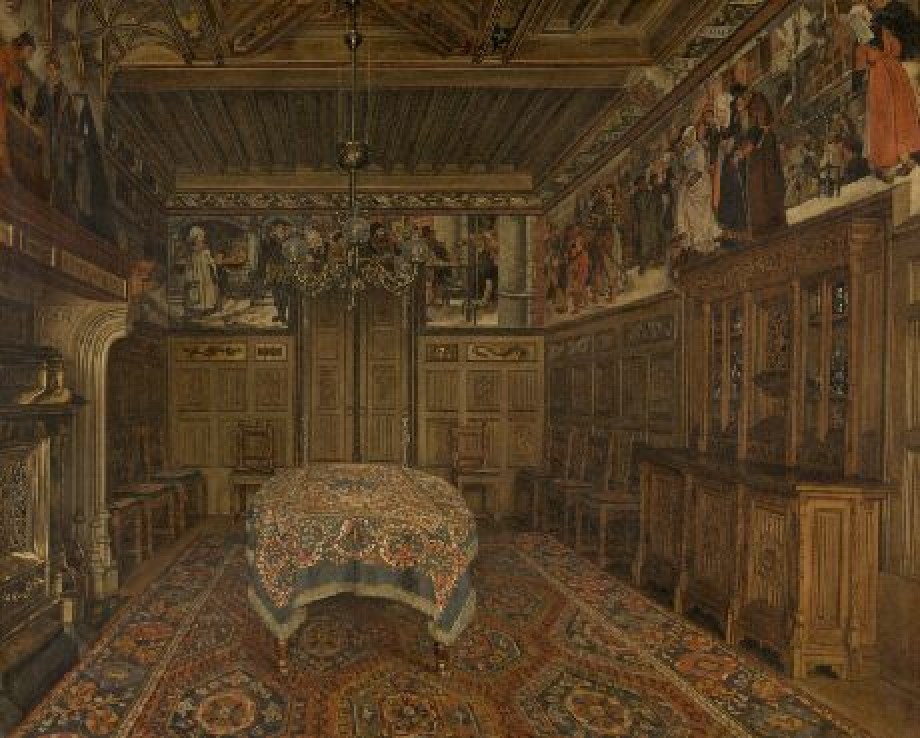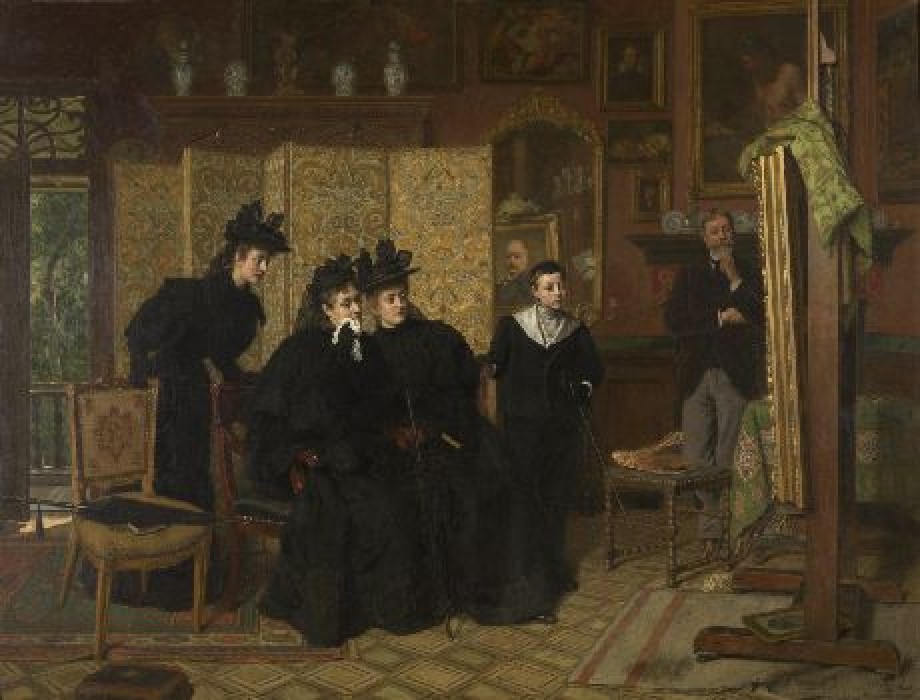The Bourgeois Salon

Artist / maker
school of James EnsorDate
1881Period
19th centuryCollection
Royal Museum of Fine Arts Antwerp
Lights! What is the actual subject of this canvas by a twenty-one year-old James Ensor? The two ladies sewing at a table in their living room? The intimate interior of their cosy and dimly lit middle-class home with its ornamental fireplace, gilt mirror and oil lamp hanging from the ceiling, the heavy carpet with the diamond-shaped green motif, the dark…
Read more
Lights!
What is the actual subject of this canvas by a twenty-one year-old James Ensor? The two ladies sewing at a table in their living room? The intimate interior of their cosy and dimly lit middle-class home with its ornamental fireplace, gilt mirror and oil lamp hanging from the ceiling, the heavy carpet with the diamond-shaped green motif, the dark wallpaper and the heavy drapes by the tall windows? Friends will have recognised the sitting room of the Ensors’ home in Ostend. The woman we see from the back could be the artist’s sister Mitche or his mother.
None of these things are Ensor’s main concern however: for him it is all about the light. The Bourgeois Salon (‘genteel sitting room’ might be more accurate) is a study of the effects of light. It is no coincidence that the twenty-something Ensor called himself an Impressionist after the example of his older French colleagues.
Here we have a mixture of intense light, with the window as its source, and partly diffuse light, in the underlit part of the space. The light is reflected in a variety of objects: white textiles, blue velvet, white marble, gilt furnishings, wood, a face, hair and an ear. Unfavourable critics wrote at the time that the spectacular and dynamic painting style – highly sketchy with luminous vermilion and cobalt blue accents – made it seem like an earthquake had occurred during the painting process.
Ensor created a series of similar ‘portraits’ or genre scenes in this fairly large format. Although painted from life, these are fictitious characters in fictitious situations. There is no need to go searching for hidden meanings: Ensor’s close friend Eugene Demolder called them ‘a series of stylish ladies’.
Read less
